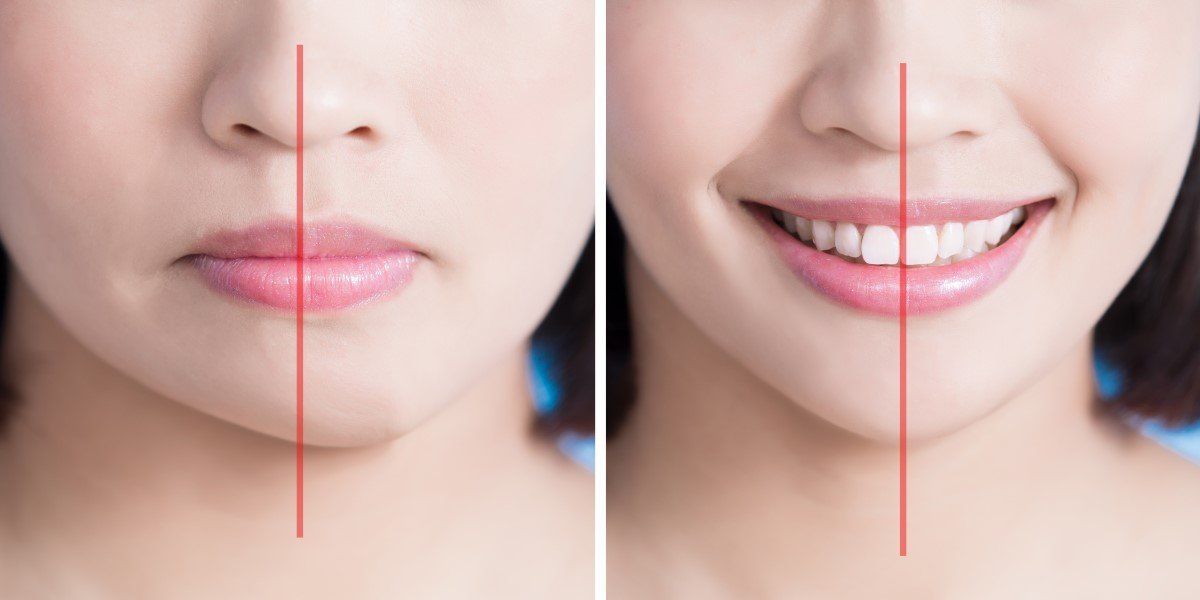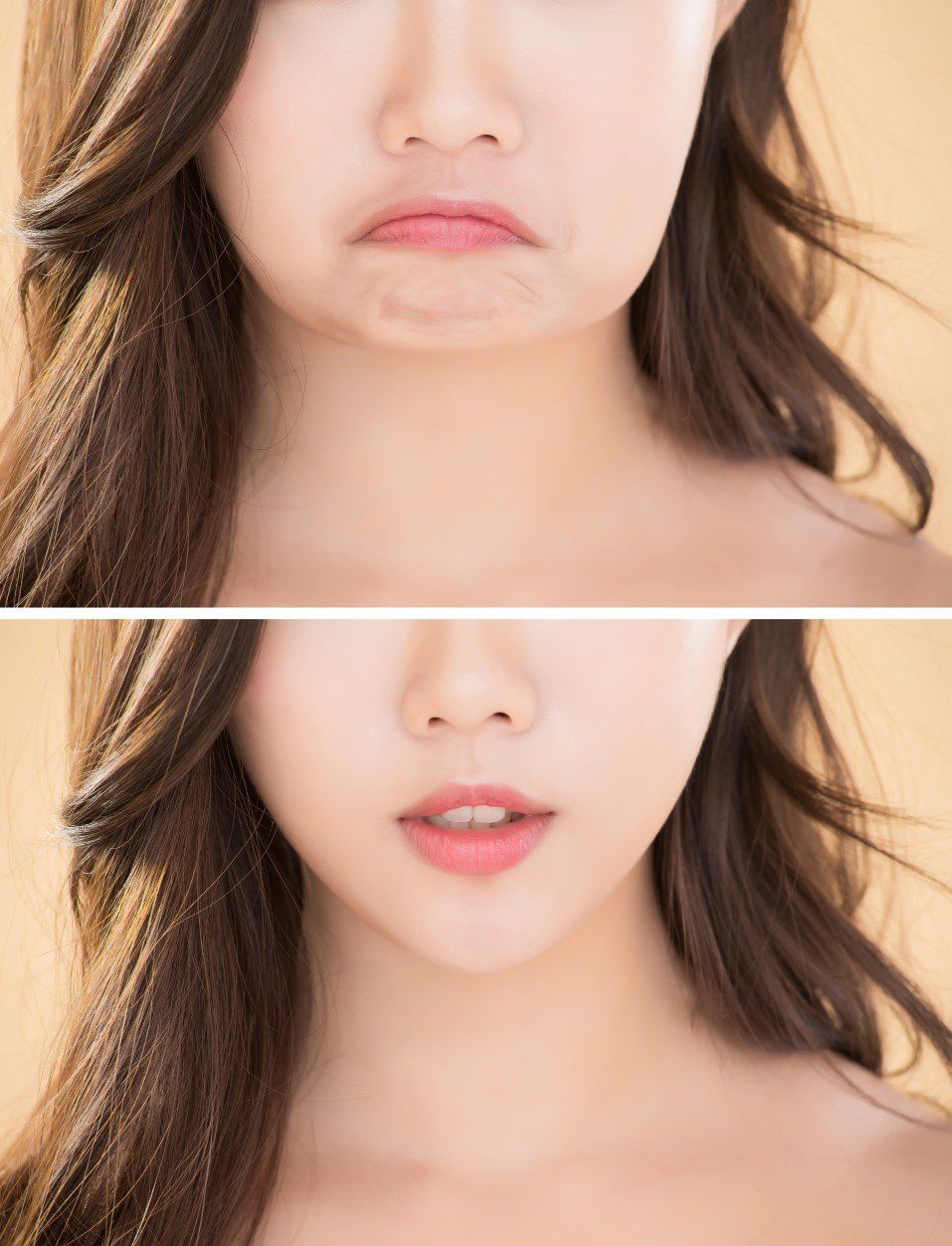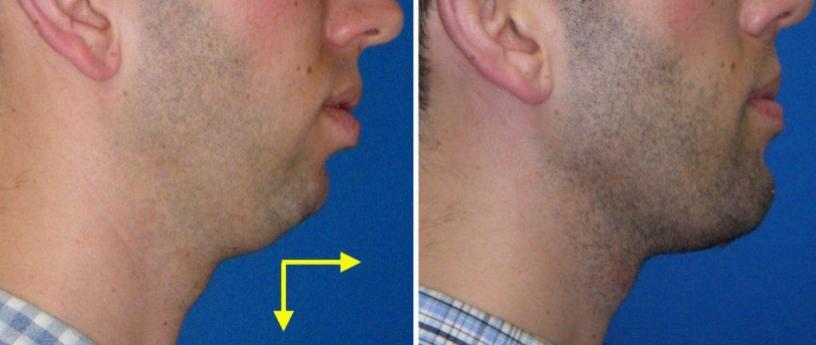Genioplasty
What is Genioplasty (Chin Surgery)?
Genioplasty means to change the shape and/or position of the chin. The procedure involves a small hidden incision under the chin and a precision cut through the anterior mandible (chin bone). 3D virtual surgery planning is often completed and custom patient specific titanium plates are used to reposition the chin into a predictable more cosmetic and functional position.
A genioplasty is the most reliable way to change the appearance of the chin and does not involve the use of silicone or other chin implants. Dr John Webster will utilise chin implants for simple small augmentation as they are easier to recover from, cost less, offer rapid healing and are reversible. However moderate to severe chin malposition will require the surgical movement of the chin bone itself.
Chin lengthening is the most common indication for genioplasty as in the Australian Caucasian population there are many patients with recessive and short chins. The genioplasty alone can allow lengthening of the lower face which is critical for overall facial cosmetic appearance. The photos below show the square face appearance prior to a chin lengthening procedure.
How do you decide if a Genioplasty is required and which one do you choose?
Although you may recognise that your chin point or profile is a concern it is very important to establish who isn’t a candidate for a chin implant as these cases should always proceed to a discussion regarding genioplasty.
Chin implants are not for everyone and if this is all you are offered you should seek a second opinion with a Specialist Oral & Maxillofacial Surgeon (What is an Oral & Maxillofacial Surgeon?)
If you have retrogenia (deficient chin) you may also have dental or jaw misalignment such as an overbite, prominent maxillary (upper jaw) central incisor teeth and a deep labiomental fold (the crease below the lip and above the chin) in the lower lip. The lower lip is often positioned more posterior or behind the upper lip in your profile side view. These patients are best managed with a specialist Orthodontist to align the teeth and a Specialist Oral & Maxillofacial Surgeon, such as Dr John Webster in Toowoomba, for Orthognathic Surgery (Orthognathic Surgery) to correct the alignment of the jaws.
If you have these features and you are offered a chin implant instead of genioplasty or orthognathic surgery it is highly likely you will look worse after the procedure with an unnatural chin prominence.
A sliding genioplasty is the most common chin surgery to correct moderate to severe chin malposition.
The facial height is divided into thirds and if the lower facial third is reduced, a combination of lengthening of the chin and advancement of the chin point is usually required to achieve the ideal natural appearance.
A sliding genioplasty can often achieve this without the need for Orthognathic Surgery especially if there is no issues with alignment of the teeth and jaws present. Many older patients may have already had orthodontic braces to align the teeth but the chin point/prominence was never addressed and cannot be addressed by orthodontic treatment alone.
The bone is then cut with precision surgical instruments and the chin can be widened, narrowed, lengthened, shortened, slid forward or backward to achieve the desired cosmetic position. The bone is then fixed in the position with a titanium plate and several small screws. The wound is then closed inside the mouth with resorbable (dissolving) sutures and is usually healed in 10-14 days. During this healing time you will likely need 3-7 days at rest from work and play.
Contemporary facial surgeons like Dr John Webster will most commonly plan your chin surgery after a CT scan and clinical photos are assessed and combined into a patient specific virtual surgical plan. The exact bone cuts and final plating kit can be exactly planned to ensure you have an entirely predictable surgical outcome. If your facial surgeon has not discussed this option with you then Dr John Webster suggests you seek a second opinion before proceeding with any chin augmentation procedure.
The video below is an example of how 3D planning for facial corrective surgery has changed the way the bones of the face can be moved around in a virtual field and then translated into patient specific surgical guides. The end of the video shows how a genioplasty can also be planned and achieved.
Are there any issues with chin implants?
When Dr John Webster finished his Oral and Maxillofacial Surgery training he was taught that “chin implants don’t work” or if they do work and patient is happy then “they will need to be removed one day” and the reasons were infection, resorption of bone, foreign body reaction to the implant, or the implant will move.
Following completion of further post-fellowship training and learning from some of the world’s leading cosmetic facial surgeons there were many long term follow-up cases of successful chin augmentation with implants without complication. There are four reasons why his colleagues in Australia had failure with previous chin implants:
1. Improper implant shape – older styles were not anatomic and in the contemporary era the chin implant is often custom designed for the patient receiving it through the use of 3D printing and virtual surgical planning.
2. Improper biomaterial for implant – materials used in the body can cause different reactions and affect the implant survival and compatibility with the body. Silicone implants are the most popular because the body forms a capsule around it and it usually causes no long term issues if it is fixed in place. This also makes them easier to remove if you are not happy with the result or would like a different size implant. Porous implants have less capsule formation and allow the body tissues to grow into them making them more stable but harder to remove if you are not happy with the result.
3. Improper or lack of fixation – if any implants are not secured to the underlying bone they will move. Even today many cosmetic or plastic surgeons in Australia and overseas insert implants by sliding them in and then suturing the wound closed. It is these mobile implants that can move and cause a cosmetic concern and also can result in underlying resorption of the bone which can be catastrophic if left unchecked. Any chin, cheek or facial implant should always be secured to the underlying bone so no friction is applied to the bone with movement of the facial skeleton in function. A small screw or two should be inserted through the implant and into the bone being augmented.
4. Inexperience and improper size implants – the placement, size and shape should be customised to the patient and consideration of ethnic variation be made during the initial consultation and 3D virtual planning. An experienced surgeon can usually be able to use stock implants and customise them for the patient in the operating theatre but even this experience does not counteract the great improvement technology and digital planning has brought to the field of facial implants.
Can you get other facial or jaw implants?
Yes. Some patients' concern is a thin narrow or oval face and they desire widening of the jaws and cheek bones with implants versus underlying bone surgery with Orthognathic Surgery. Examples that can be discussed at your initial consultation with Dr John Webster are mandibular angle implants, malar (cheek) implants, forehead implants and of course dental implants (insert link to dental implants section) which can greatly enhance the appearance of your smile if you have missing teeth.
Some patients' concern is a wide square face and they desire narrowing and softening of the jaw line. This too can be planned with 3D virtual planning and removal of excess bone and muscles which can achieve the desired cosmetic result for patients with wide faces. There is not usually a need for any implants in this setting to augment the facial appearance.
How can you arrange a consultation to discuss Genioplasty and Chin Implant surgery?
If you would like to know how we can help you further, or to book a no obligation consultation with Dr John Webster.
Please phone 07 4580 4733 or alternatively request an appointment now online.







